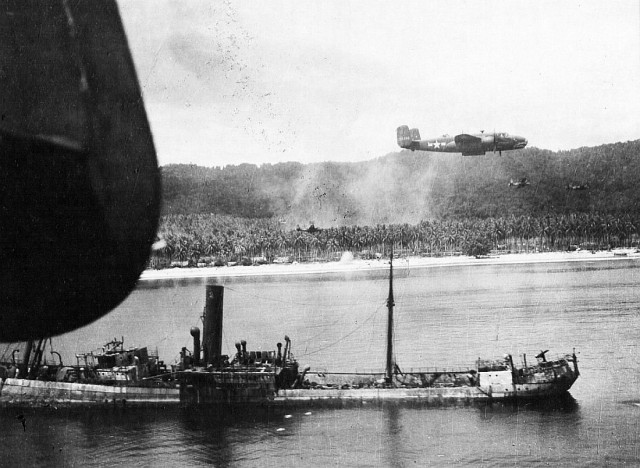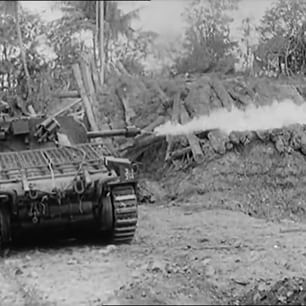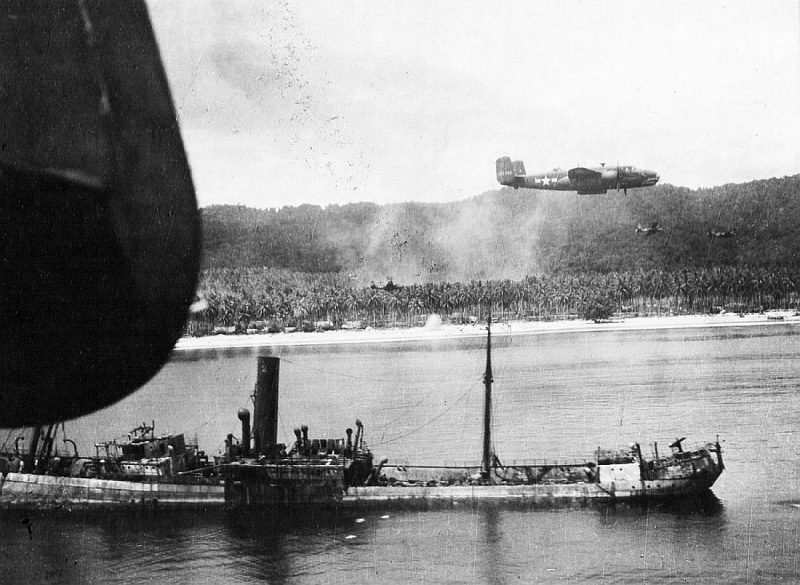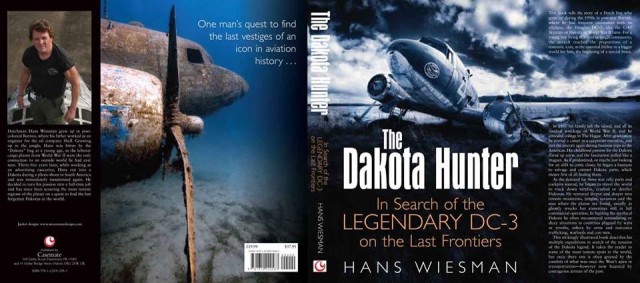
By 1944, Nippon’s Imperial Navy was desperately fighting to stop the Allied Naval Forces in their island hopping swarming about to the North. The Indonesian Island of Borneo was of major strategic importance for the Japanese war efforts, as more than 50 % of the vital oil supply for their ships and aircraft came from the rich Eastern Borneo oilfields near Balikpapan and Tarakan. With the fall of PNG /New Guinea, the allied forces took control over the Biak islands (Dutch New Guinea) and started to air raid the largest oil refinery and sea port of Balikpapan in Sept. 1944. All oil storage tanks, facilities and shipping were to be bombed by B-24’s and later B-25’s in a total of 5 raids that destructed the export of the black gold to the Japanese Navy in the Philippines.

The Japanese Army constructed heavy fortifications along the Balikpapan shores in anticipation of a naval invasion. That invasion came on 1 July 1945 with the Australian 7th Division, supported by US Navy and close air support. The landing craft brought in light tanks and a load of flame throwing equipment that had proven to be very effective against persistent enemy soldiers in pillboxes, well armed and willing to fight to the last man. As a young kid , I came to the island in the early 1950’s and found the charred bunkers at the lower beach road. The horrifying agony of the soldiers must have driven the higher positioned bunker crews to commit suicide or to flee to the North, into the dense Jungle. I saw pencil drawings of rape and mutilation in these fortifications that were surely not good for the eyes of an 8 year old boy. It gave evidence of a fanatic sort of creed that seemed totally alien to us.
Warning graphic content! Click here to see the image.
The age old Head Hunting rituals of the savage Borneo Dayak tribes had survived far into the 20th century. Though officially outlawed by the Dutch Colonial Rulers, the head hunting practices must have continued in tribal wars over the years. But with the outbreak of the war in Indonesia in 1942, that official ban was lifted: the Dayaks got a license to kill Japanese Soldiers, and we must presume that the re -opening of the man hunting season was welcomed with loud cheers and thorough cleaning of their blow pipes. The results were rather devastating, with these head hunting skills honed over ages.
Warning graphic content! Click here to see the image.
As the war came to sudden halt by mid August 1945, many Japanese soldiers were left abandoned, out there in the Borneo jungle in isolated positions. Most of these stragglers could not believe that The Empire of the Sun had surrendered, so they had evacuated into the jungle thinking that the war had not yet ended. And that was correct for them, but their enemy was from here invisible. The Dayaks simply continued long after 1945 the hunt for the straggling Japanese soldiers. A Dutch missionary came to our house in Balikpapan and told us that he during a visit to a Dayak tribe had noticed “fresh” shrunken heads, as you see in the picture.
What happened out there is a rarely told story, it will shock you. In my book you can read the harrowing stories, where the well trained Japanese soldiers with their superior guns could not survive against the venomous darts of an eerie enemy.
The book can now be ordered at Amazon USA/ UK, Barnes & Noble , also with a direct link via my site.
Also soon available (in limited series) as autographed book, see for more details

